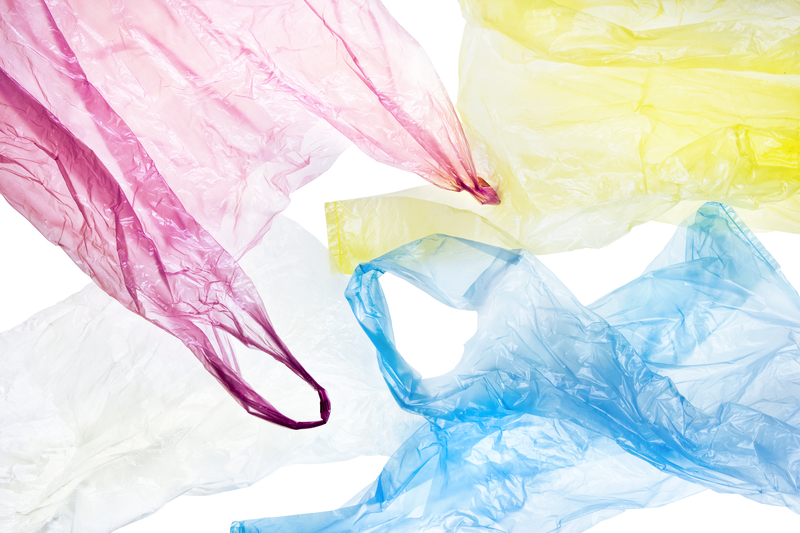What to Know About Recycling Metal Pots and Pans: A Comprehensive Guide
Recycling is essential in our journey toward a more sustainable world, and one area that often prompts household questions is what to do with worn-out or unwanted cookware. Recycling metal pots and pans is not just possible--it's increasingly relevant as global environmental awareness grows. This guide will provide in-depth, up-to-date insights on the recycling process, tips for eco-friendly disposal, and creative ways to repurpose old cookware. Whether you want to reduce landfill waste or give your loyal kitchen tools a second life, here's what you need to know about metal pot and pan recycling.
Why Is Recycling Metal Pots and Pans Important?
When we talk about sustainable living, every action counts. Old metal cookware may seem harmless, but when disposed of in landfills, these items contribute to environmental degradation. Most pots and pans are made from valuable materials, such as aluminum, stainless steel, or copper, which can be recycled infinitely without significant loss in quality.
- Reduces landfill waste: Saving bulky cookware from the trash minimizes overflow at local landfills.
- Conserves natural resources: Metal recycling saves raw materials and reduces the need for mining.
- Cutting energy use: Reprocessing recycled metals uses less energy than creating new ones from ore.
- Supports circular economy: Keeps valuable metals in circulation and promotes sustainable consumption patterns.

Understanding Types of Metal Cookware
Before tossing your old pans in the recycling bin, it's key to understand the materials they're made from. Each type may require a slightly different recycling process or may be accepted only at specific facilities.
Common Materials in Pots and Pans
- Stainless Steel: Highly durable and commonly recycled. Stainless steel pots and pans are magnets for recyclers because of their high value.
- Aluminum: Lightweight and excellent for recycling, though nonstick coatings complicate processing.
- Copper: Coveted by recycling centers for its value and recyclability.
- Cast Iron: Hefty and long-lasting; can be recycled if rusted beyond repair.
- Nonstick (Teflon-coated): These require extra steps before recycling due to chemical coatings.
*Note: Some cookware incorporates mixed materials like plastic or silicone handles, which may need removal before recycling.
Can You Put Metal Pots and Pans in Your Curbside Recycling?
One of the most frequent questions is: Can I recycle metal pots and pans curbside? The answer varies by location and recycling facility.
- Check Local Guidelines: Many municipal curbside recycling programs do not accept metal pots and pans.
- Alternative Drop-Off: Dedicated scrap metal recycling centers or transfer stations are usually better options.
- Condition of the Cookware: Clean, residue-free items are more likely to be accepted, especially if coating like Teflon has been removed.
To avoid contaminating your local recycling stream, always check with your local waste management authority before setting out pans with everyday recyclables.
How to Prepare Pots and Pans for Recycling
Proper preparation ensures that your cookware has the best shot at a new life as recycled metal. Here are step-by-step instructions for getting your metal pans and pots ready for recycling:
Step 1: Remove Non-Metal Attachments
- Detach plastic, rubber, or wooden handles. These may need separate disposal.
- Remove lids made of glass or other materials not accepted as metal scrap.
Step 2: Clean Thoroughly
- Scrub off food residue and grease so recycling centers will accept your items.
- For nonstick pans, research how to safely remove the Teflon (often not an at-home job), or consult your recycling facility's specific rules.
Step 3: Sort by Material
- Grouping similar metals can help at drop-off sites (for example, aluminum with aluminum, steel with steel).
- Mismatched materials can be rejected if combined carelessly.
Where to Recycle Metal Pots and Pans
Depending on your region, there are various places to responsibly recycle unwanted cookware:
- Scrap Metal Yards: Most will happily accept pots and pans of all types, as long as handles and non-metal components are removed.
- Household Waste Recycling Centers: Many municipal run centers have dedicated bins for metal items.
- Charity Shops and Thrift Stores: If your cookware is still in good condition, consider donation for reuse rather than immediate recycling.
- Special Collection Events: Some cities host electronics or metal recycling days--perfect for disposing of hard-to-recycle household goods.
- Mail-in Recycling Programs: Some companies offer mail-back services for old cookware, especially nonstick types.
Find Local Recycling Programs
- Use online search tools like Earth911 or your city's public works website to locate the correct facility for recycling metal pots and pans in your area.
Are Nonstick Pans (Teflon) Recyclable?
Nonstick cookware introduces unique challenges regarding recycling. The traditional PTFE (Teflon) coating complicates processing, and some facilities will not accept these items.
- Contact Your Recycler: Ask if they'll accept nonstick pans--rules vary widely.
- Remove Coatings: Some specialty recyclers can strip nonstick layers, but DIY attempts may pose health risks from chemical exposure.
- Manufacturer Take-back: Certain brands offer recycling programs for their cookware, including return shipping labels for convenience.
When in doubt, check with the product manufacturer or your local recycling center for the safest, most responsible options.
Creative Ways to Repurpose Old Pots and Pans
If recycling isn't available or you want to give your cookware a new lease on life, consider upcycling metal pots and pans. Here are some inventive possibilities:
- Garden Planters: Old saucepans or Dutch ovens make quirky and functional homes for plants.
- Craft Storage: Use deep pots to hold utensils, yarn, or tools.
- Wall Art and Clocks: Turn frying pans into unique wall hangings or kitchen-themed clocks.
- Bird Baths or Feeders: Large, shallow pans can be repurposed in the garden.
- Outdoor Candleholders: Old muffin tins make creative outdoor lanterns or candle molds.
Get creative before resorting to the recycling bin--sometimes the best way to help the planet is to extend an item's useful life!
Frequently Asked Questions About Recycling Cookware
-
Can I recycle pots and pans with burnt-on residue?
It's best to clean cookware as well as possible. Burnt remains often deter recyclers, but a few small stains typically won't disqualify clean metal. -
What about glass lids?
Do not put glass lids in scrap metal recycling--they require separate glass recycling or reuse. -
Are enamel-coated pans acceptable?
In general, yes. Enamel will be dealt with as part of the metal smelting process, but always confirm with your recycling facility.
Tips for Buying Easily Recyclable Cookware
Practicing sustainability starts with smart purchases. Next time you buy kitchenware, consider these tips to ensure easier recycling in the future:
- Choose pure metals: Stainless steel, cast iron, and aluminum are recyclable almost everywhere.
- Avoid unnecessary coatings: Uncoated pans have fewer recycling obstacles.
- Select items with metal handles: All-metal construction is simpler to recycle than mixed materials.
- Invest in durability: Higher-quality items last longer, generating less waste overall.

Environmental Impact: Why Metal Recycling Matters
The statistics are compelling. Recycling aluminum saves up to 95% of the energy required for producing new aluminum. For steel, reusing scrap in new production can save up to 74% of the energy compared to primary manufacturing. Sourcing recycled metals for cookware and other products means fewer resources are extracted from the earth, reducing greenhouse gas emissions and minimizing toxic runoff.
Quick Facts:
- Each ton of recycled steel saves 2,500 pounds of iron ore and 1,400 pounds of coal.
- Metal can be recycled repeatedly without losing quality, making it a truly circular resource.
Summary: Giving Metal Pots and Pans a Second Life
Understanding how to recycle old pots and pans supports both your local community and the global environment. Never toss metal cookware in the trash--when recycled or upcycled, these items stay out of landfills and help manufacture new consumer goods with reduced resource use.
- Check with your municipality about accepted materials.
- Properly prepare cookware for recycling--clean and remove non-metal parts.
- Locate the right recycling center or donation option.
- Explore creative upcycling ideas for cookware beyond recycling.
Recycling metal pots and pans is a small act that makes a big difference. With a bit of planning and awareness, you'll contribute to a more sustainable, greener future--starting right in your kitchen.